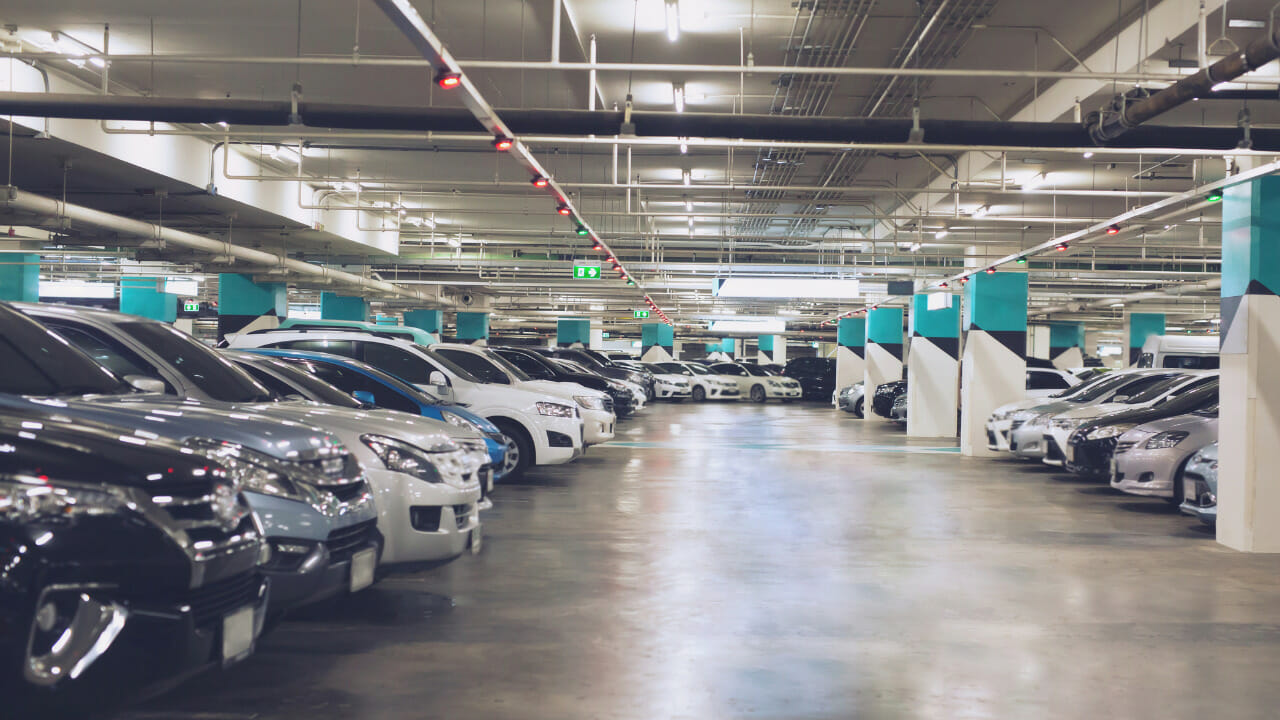A few weeks ago, I heard someone describe what life in a sustainable city should feel like. He called it the rule of “3, 30, 300” – to see 3 trees from your window, to have 30% of the space around you as ‘green’, and to have a large open green area (like a park) within 300 meters of your home. There are of course more elements to consider – housing, healthcare, telecommunications, waste management, etc. So I wouldn’t necessarily make this a formula, but I find it an effective way to think about one aspect of a green and sustainable city.
As I look outside my window, I realize I am one of the lucky ones. But this is extremely hard to achieve in many densely populated areas where there is insufficient land even for housing and schools, let alone the creation of green spaces. Yet, many cities are eaten up by highly inefficient parking lots.
We don’t often think about parking when we talk about the challenges of sustainable road transport. We might discuss air and noise pollution, emissions, congestion, and fatal accidents, but parking usually doesn’t come up as a topic at the dinner table. This is why it may surprise you to know that there are over a billion parking spaces in the United States, 3 for every car on the road. Conversely, some studies conclude that drivers in the South East Asian city of Kuala Lumpur in Malaysia spend an average of 25 minutes every day hunting for parking. That’s 5 full days every year, just circling the streets, looking for a sign that someone is about to reverse out of a lot, queueing up behind them with hazard lights flashing, then pouncing on the open spot with a triumphant yawp. I know because I used to be one of these parkers myself.
We need innovative approaches in parking management which can be broken down into two components: parking availability, which allows people to find available parking spaces quickly, and payment integration, where parking space payments are streamlined. Using these together will make parking easier for citizens across the city.
This begins with making parking spaces more easily identifiable in a digital way. Platforms such as KERB will increase access to parking spots through better use of data analysis. KERB’s data enables us to spot when drivers are circling on the hunt and can serve real-time data on where available spots are to be found. KERB allows for parking payment integration, which means drivers don’t have to worry about having exact change or misplacing their parking tickets. KERB makes it easy enough that people can just drive up to a parking space and pay the amount that reflects the length of time they need to park. Then if anyone needs more money, they can easily top up using an app on their phone. And if they need to extend their stay….[is this also part of the solution?] This is great because it allows forward planning, limits the chances of human error, and increases convenience.
The integration of KERB’s technology is key in unlocking sustainable cities. There needs to be a shift from simply managing the 4% of the time when cars are on the move, to focusing on the space that vehicles have to take up when parked 96% of the time.
Vicky Boiten Lee
KERB Advisory Board Member




